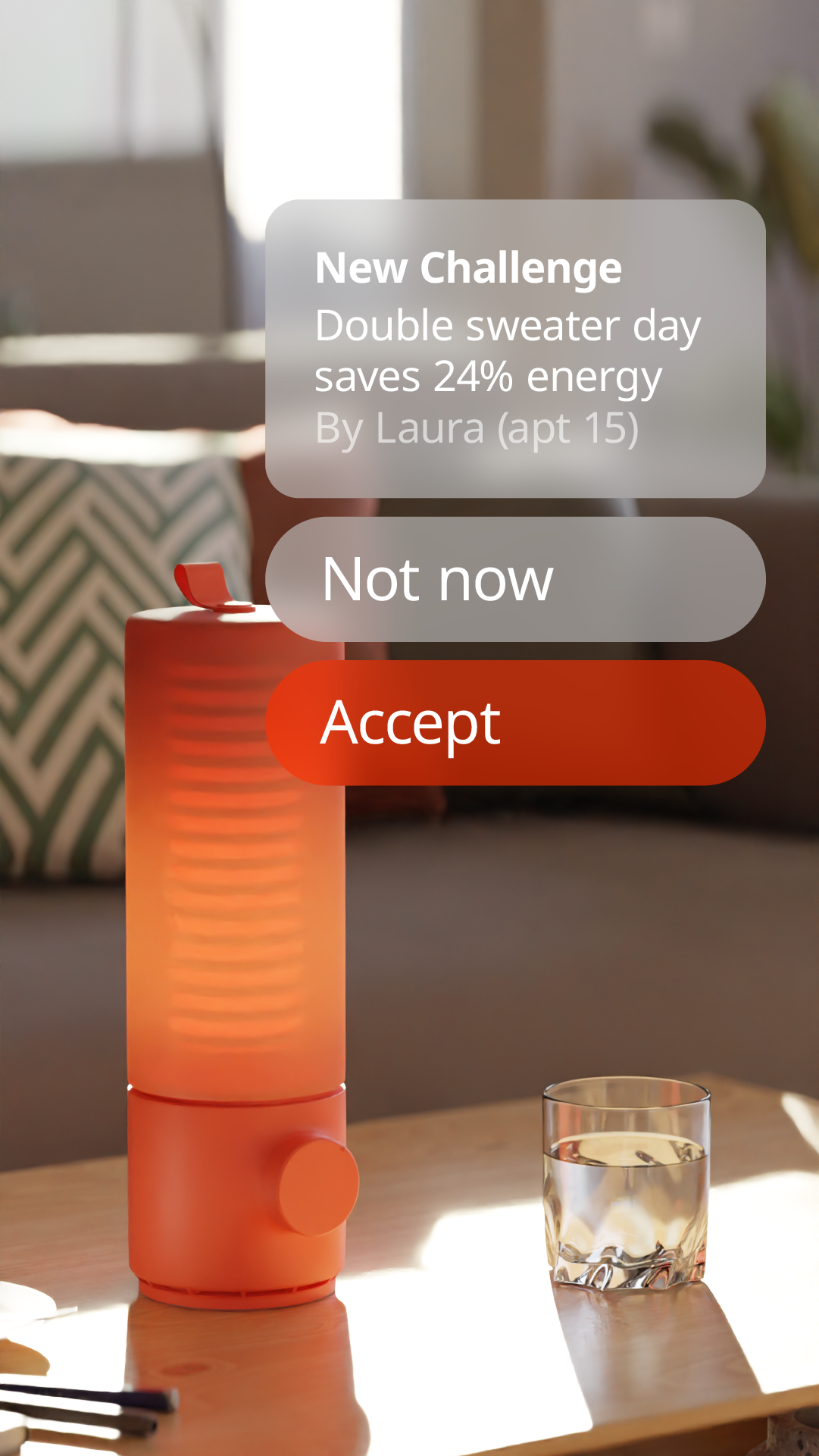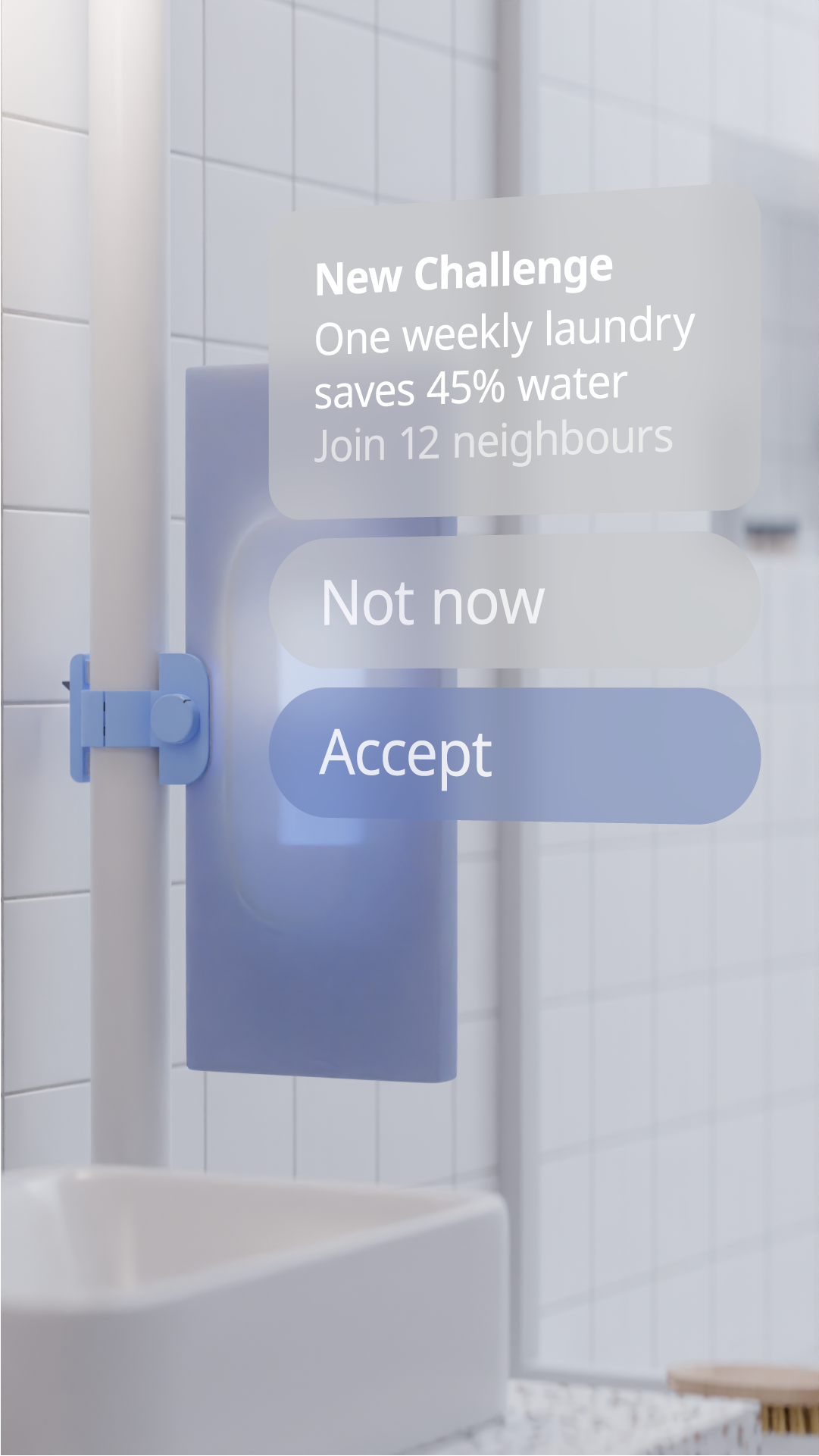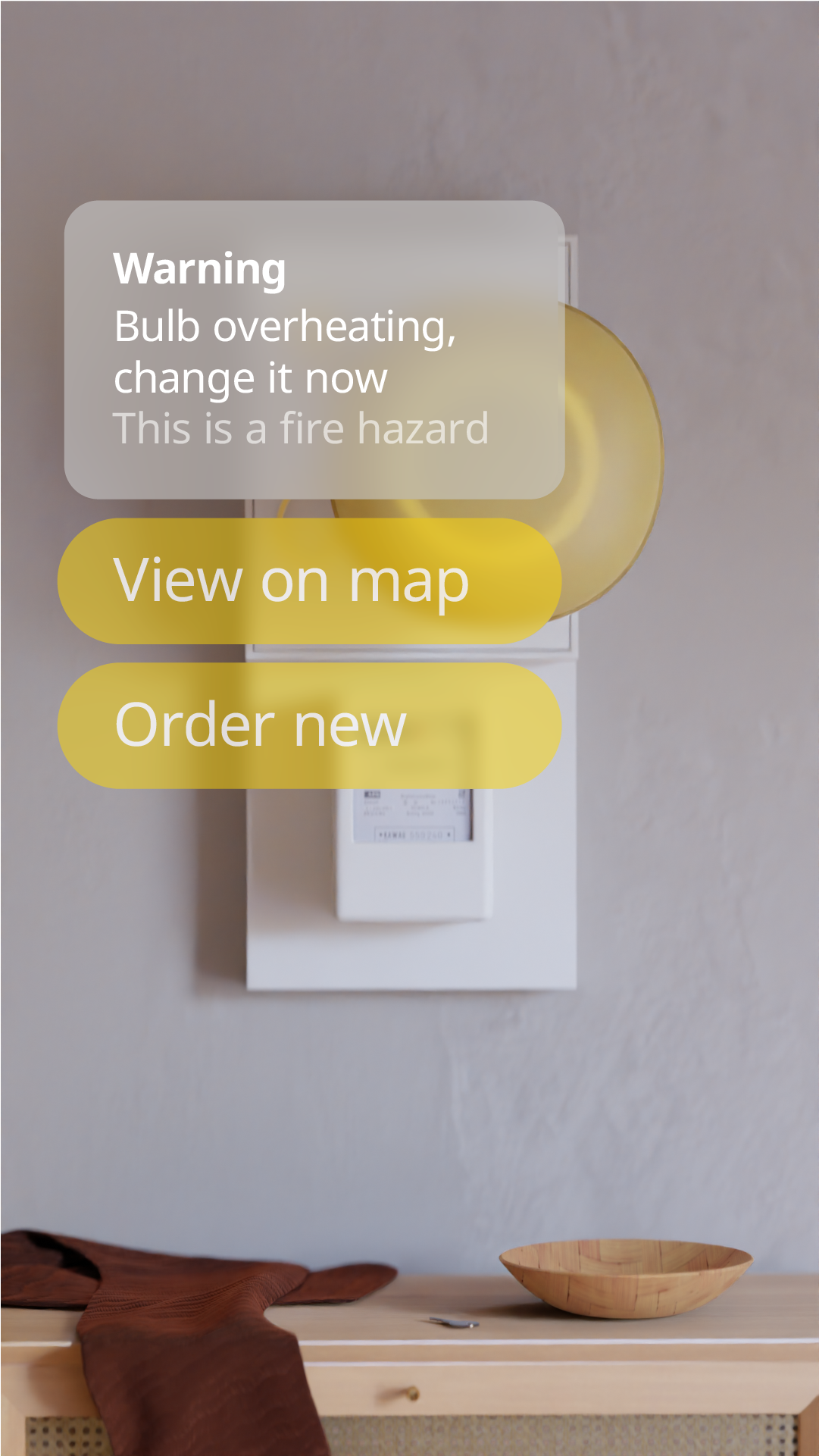There is no time to waste, nor water, nor electricity, nor heat. You know that, but you don't understand what it means. Kilowatt-hours, liters per second, and kilojoules are just foreign words. Do you *need* to understand them to take action? No. Not with a set of perfectly capable AIs to monitor your grid. Now go and close the windows, or your heat assistant will teach you a lesson.



Artificial Authority for the Greater Good
Responsibility Machines is a research and development project looking into energy and resource monitoring solutions for homes. As we transition toward weather-dependent energy models and get ready to face increasingly frequent water scarcity, we must listen to the grid and optimise our consumption accordingly. At an individual scale, this reality can be counterintuitive and difficult to assess.
With this in mind, Responsibility Machines presents a set of three assistants that act like organs for the home — respectively managing water, heat, and electricity. Departing from the classic yet cryptic energy meters of today, and picking up where 'smart' metering systems left off, the assistants translate abstract units into relatable experiences. As a whole, the system invites its user to look at their habitat as if it were a big creature they need to nurture. It seeks this way to demystify their understanding of resource consumption with an approachable design proposal. Here, people become part of a living system: its actors, consumers, and guardians.
Underneath this veneer lies a thought experiment: if as individuals we can't handle the complex nature of our consumption, wouldn't it be easier to delegate it to a higher, more capable system? A system that can not only inform us, but also coach us, help us adopt new behavioral patterns, or even reprimand us when we do wrong? With this, Responsibility Machines offers a future where consumer products are designed to gain control over our shortcomings: do we want for artificial intelligence to become artificial authority?
"The average consumer knows little about how electricity is generated, distributed, and consumed, the impact of using it, or how to maximize efficiency and cost savings."
2016 Report from the US Dep. of Energy on Advanced Metering Infrastructures
System Setup
You unpack the machines and read the notice. "Think of your home as a body: one that aches, leaks, ages, and must be kept in shape. Pipes and cables run through it like veins. If it loses too much heat, it can catch a cold or even develop a fever. You must take good care of it." You know all that, but you tend to be too lazy or forget — or just not really know what you're doing. This is why you bought the assistants.
You tack the artificial organs to cables and pipes and let them monitor your consumption. They'll tell you how to behave so you can improve it. They can be pretty blunt and challenging, but it's a commitment you're willing to make.
Calibration
Using Non-Intrusive Load Monitoring and infrared sensors, the artificial organs register the location and unique pulse of each appliance, tap, and radiator. They infer patterns from daily usage, and scan the home for heat bubbles and cold drafts.
This is all technical mumbo jumbo, but you got the main idea. The devices are all installed and running already, and you know they've started learning. You had to introduce the few appliances that weren't automatically detected. It took the electricity assistant a good minute to detect the signature of the off-brand microwave, but now it's done: no matter which setting you use, it's recognised.
You can't say you didn't feel silly showing the whole flat to a piece of electronics. But the heat assistant did a good job. You had no idea there were so many pipes in the walls. The fun thing is, you can tell which of your neighbours keep the radiators on during the day.
Human-Centered Units
Rather than numbers, the system favors visual cues. The electricity assistant asks you to do a hand gesture, so you can experience a real Watt-second. The water assistant uses the liter as a relatable unit — you know what a liter is. All this lets you fine-tune your understanding of resources used in the home. To think that the energy you spend doing this gesture is just a crumb of what your house uses every second. Just a day's worth of electricity for your home is the same as you doing this gesture, non-stop, for 3 years. You look at your hand and try to imagine how that would feel.
Difficulty Settings
"The Responsibility Machines are here to help you. They will show ways to easily optimise your consumption and, if you want, they'll set up a custom training routine for you."
You check the app for structural changes. Moving the couch away from the windows: check. Changing the water boiler is a 'maybe later.' Replacing that ageing boiler was easy-peasy, the system suggested energy-efficient alternatives.
Now time to take a deep look at your habits. How much are you willing to change them? You decide that turning the tap off when soaping up is where you draw the line. You like having warm water fall on your shoulders as you scrub your feet.
Difficulty Settings — 'Hard Mode'
For those willing to test their limits, the program offers a hard mode. 'What does it look like?', you wonder as you unlock the feature. The simulation shows how you could live a heaterless life by stacking all furniture into an insulating fortress — it will keep your bed shielded from the cold. This could be fun, you think. Option two: get rid of the sink. The amount of untouched water that escapes is heartbreaking. Now, if it is poured, you must drink it.
This isn't something for you. But one day, who knows? Maybe it will feel more accessible as you train. For now, you keep it at a lower setting.
The Responsibility Machines have the ambition of becoming a collective adventure, and so they connect you with other homes in your building. You tap 'accept' and check the notifications as they pop up. Your neighbours from the first floor have invited you to join their 'double sweater challenge', so you grab your warmest, fluffiest jumper and turn all heaters off. Let them see who can hold it the longest!
What else does the system do? Well. It's the voice of your home, isn't it? It knows when something's not quite right, and it brings it to your attention. Replace a leaky appliance, a defective bulb, before you find yourself facing structural damage. It's only a matter of time before they make it mandatory, just like the smoke detectors the housing company installed in your flat last year.



Fluctuating Futures of the Grid
There are sunny days, and there are rainy days. Nature is in flux, as are the amounts of energy and water available for consumption. The prices go up and down like a roller coaster — soaring when production beats demand, dipping otherwise. Sometimes they even dive into the negatives when there's so much extra electricity available. Not using it could damage the grid. You've been told all this, but reading the future really isn't your thing.
The Responsibility Machines will teach you to develop your intuition and use it to your advantage. They know it didn't rain much last winter, so you should make every drop count. It knows the upcoming storm means free power tomorrow. It knows the best time for heating, and the best time for opening windows. Soon, you will know too, but for now you must complete your training. Just do what the machines say.
"Electricity demand typically rises sharply after major events or following the climax of a popular tv programme when a large number of viewers collectively return to everyday business, including power-consuming habits such as switching on lights, computers — or the kettle.
The grid operator needs to forecast demand and supply as precisely as it can to prevent blackouts, which can result from sudden surges placing a big strain on the electricity network."
'England brews up sufficient power for World Cup tea-time surge'
Karolin Schaps, Reuters 2014
